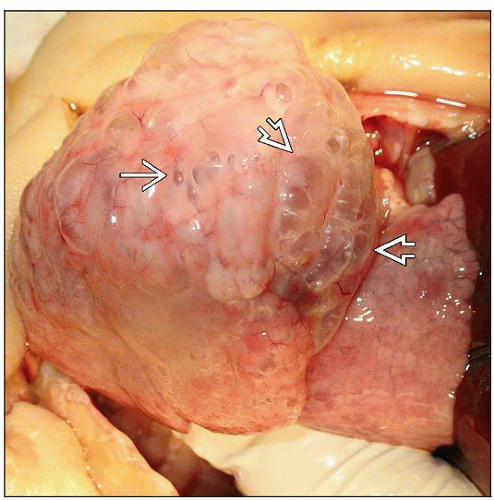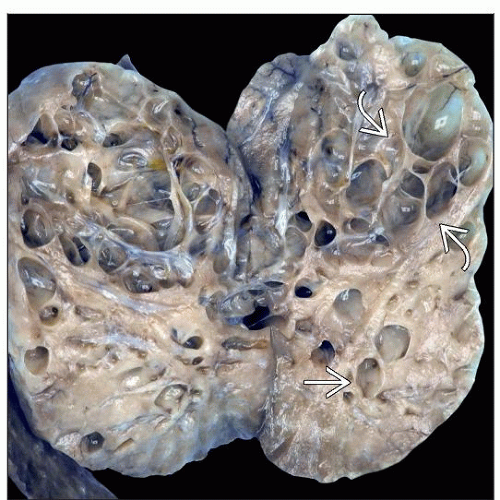Interstitial Pulmonary Emphysema
Larissa V. Furtado, MD
Angelica R. Putnam, MD
Key Facts
Clinical Issues
Most commonly occurs in premature infants with respiratory distress syndrome treated with assisted ventilated
Interstitial pulmonary emphysema can be acute (< 7 days duration) or chronic (persistent)
In terms of distribution, interstitial pulmonary emphysema may be
Confined to 1 lobe: Localized interstitial pulmonary emphysema
Diffusely distributed through all lobes: Diffuse interstitial pulmonary emphysema
Microscopic Pathology
Variable degree of cystic alveolar dilation
Cysts are lined by compressed lung parenchyma
Cyst walls commonly show variable degree of fibrosis and multinucleated giant cell reaction
ETIOLOGY/PATHOGENESIS
Etiology
Caused by increased intraalveolar pressure
Aspiration of foreign material (e.g., meconium)
Partial occlusion of bronchi or bronchioles
Pulmonary hypoplasia
Frequent complication of high-pressure-assisted mechanical ventilation
May arise spontaneously without any respiratory complication
Pathogenesis
Increased alveolar pressure leads to alveolar rupture and air leakage with dissection into perivascular sheath and subsequent interstitial pulmonary emphysema
Stay updated, free articles. Join our Telegram channel

Full access? Get Clinical Tree








